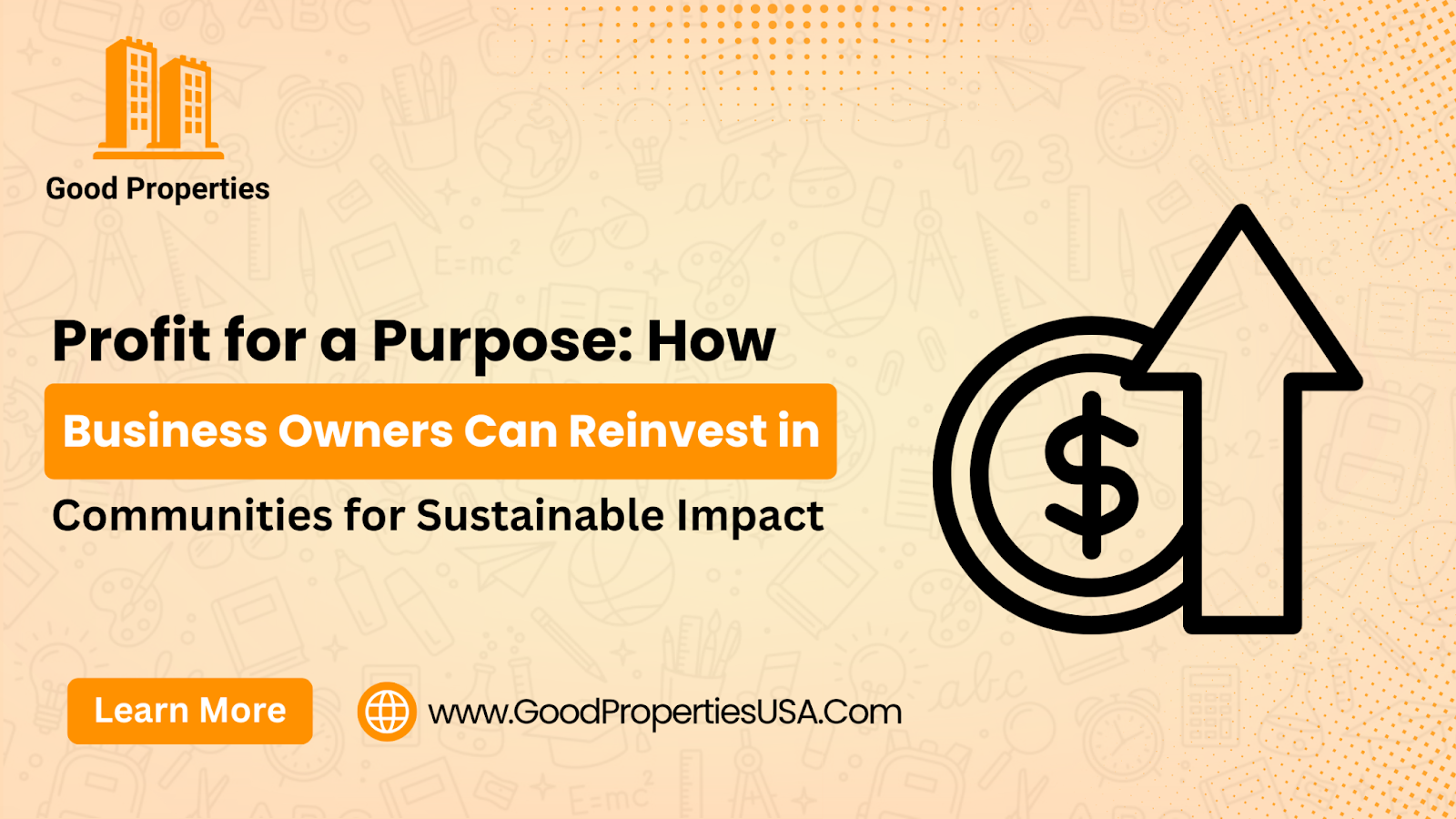
In the modern business world, success is no longer measured by revenue alone. This expectation isn’t a trend, it’s a shift in how the world defines value and impact.
What’s emerging is a new kind of business model, one that reinvests profits into communities, uplifts underserved populations, and generates sustainable, long-term impact without compromising the bottom line.
What Is “Profit for a Purpose”?
“Profit for a purpose” refers to the concept of using business profits not only for expansion or shareholder returns, but for community development, social equity, and economic empowerment.
In simpler terms:
You earn ethically. You reinvest strategically. You impact meaningfully.
This model has been pioneered by nonprofits for decades.
Why Should Business Owners Care?
Whether you run a startup, adopting a “profit for a purpose” mindset can transform your business in multiple ways:
1. Boosted Brand Loyalty
Consumers today prefer brands that stand for something. According to a Nielsen report, 66% of consumers are willing to pay more for products from companies that are committed to social impact.
2. Sustainable Growth
When communities thrive, your business environment becomes more stable and productive. Reinvestment creates ecosystems that support your long-term success.
3. Employee Attraction & Retention
Top talent especially Millennials and Gen Z, want to work for companies with values. Purpose-driven companies experience up to 50% lower turnover.
4. Tax Incentives
Many governments offer tax deductions, credits, and grants to businesses that invest in social programs or underserved communities.
5. Legacy & Reputation
Socially responsible businesses are better positioned for partnerships, media coverage, and long-term influence in their industries.
Learning from Nonprofit Models
Let’s explore how nonprofit organizations have successfully implemented profit-for-purpose strategies and how their models can inspire business owners.
Goodwill Industries (USA)
Operates thrift stores to fund job training programs for individuals with barriers to employment.
- Business Insight: A retail model that funds workforce development.
BRAC (Bangladesh)
Runs dairy, handicrafts, and retail businesses; profits fund schools and health programs.
- Business Insight: Multiple revenue streams can directly support social programs and scalability.
LivelyHoods (Kenya)
Empowers youth and women to sell eco-friendly products; earnings support training and salaries.
- Business Insight: Community involvement becomes both a product and a platform for empowerment.
WeVersity.org (Pakistan)
Provides free digital training and connects learners to remote jobs via WeJob.org.
- Business Insight: Invest in talent development that fuels both personal growth and economic contribution.
GoodPropertiesUSA.com (USA)
Offers nonprofits in New Berlin, USA, free office space and IT services to help them grow without overhead.
- Business Insight: Utilize underused assets (e.g., property, services) to empower other changemakers while enhancing your business presence.
How Business Owners Can Start Reinvesting for Impact
Adopting this model doesn’t require overhauling your entire business. You can begin by integrating small, strategic actions.
1. Identify Your Assets
What do you have that could be repurposed for good?
- Space
- Talent
- Expertise
- Inventory
- Networks
2. Align with a Purpose
Choose a cause that aligns with your brand identity and your customer’s values.
- A design agency might offer free branding for local schools
- A food company could support nutrition programs for low-income communities
3. Create a Community Revenue Stream
Consider developing a side project that’s designed to fund a cause:
- Limited edition product lines
- Paid workshops or trainings
- Digital products (e-books, courses) that donate a percentage to local initiatives
4. Reinvest & Report
Be transparent. Show where the profits go. Share stories. Highlight impact. This builds customer trust and donor credibility.
5. Use Technology
Utilize platforms like Shopify, Patreon, Substack, or YouTube to monetize knowledge, experiences, or services—and use the income to fund initiatives.
Business Ideas with Built-in Purpose
Here are some low-risk, high-impact ideas for reinvestment:
- Eco-friendly product lines with proceeds funding green initiatives
- Online courses with scholarships for underserved youth
- Offering free or low-cost space to nonprofits during off-peak hours
- Skill-building services for job seekers
- Partnering with ethical suppliers and reinvesting saved costs
It’s Not Just About Doing Good, It’s About Doing Well
This isn’t about charity. It’s about sustainable strategy.
The most successful businesses of the future will be those that integrate social impact with profitability. They won’t just sell a product, they’ll solve a problem.
Business owners hold incredible potential, not just to generate wealth but to transform lives.
By reimagining how profits are used, companies can become engines of opportunity.
Let your profits speak louder than just earnings, and impact.
Explore howGoodPropertiesUSA.com is leading the charge in purpose-driven support for nonprofits, and learn how you too can turn your business into a catalyst for change.

